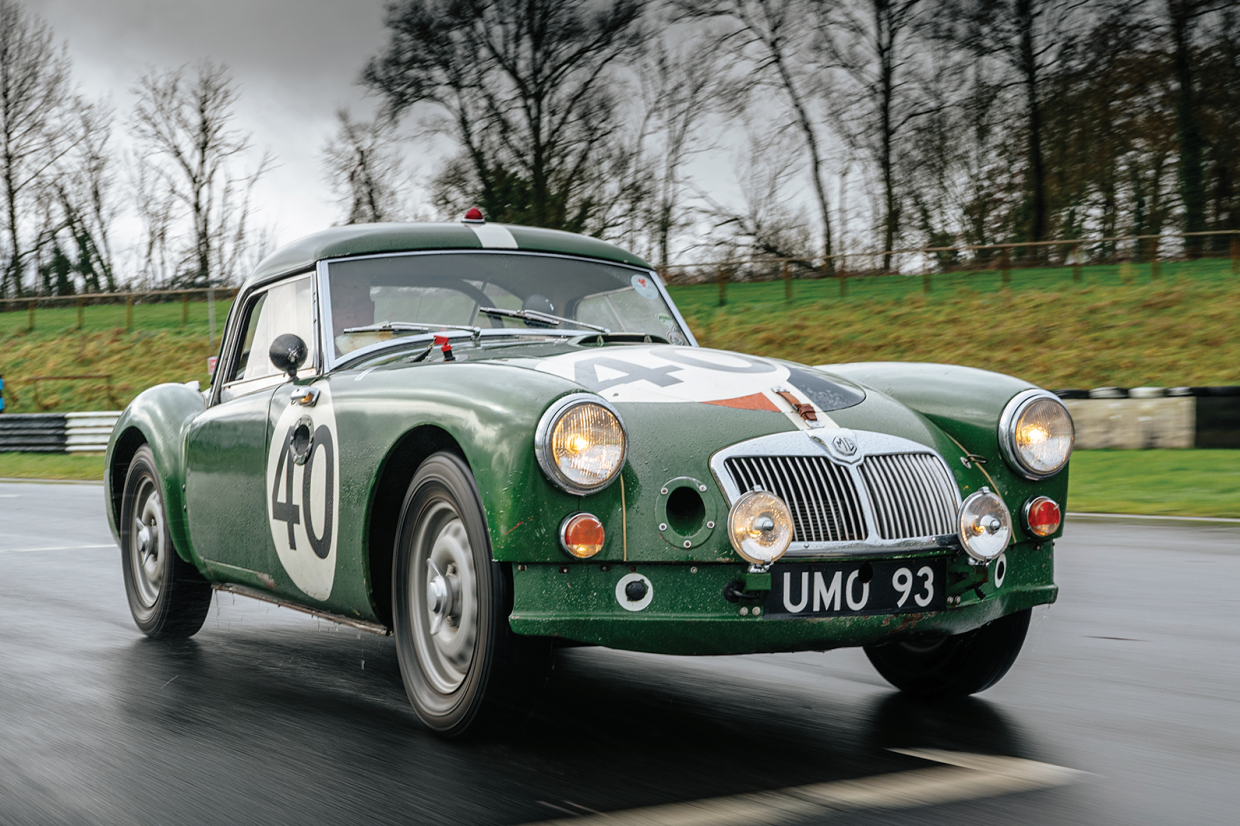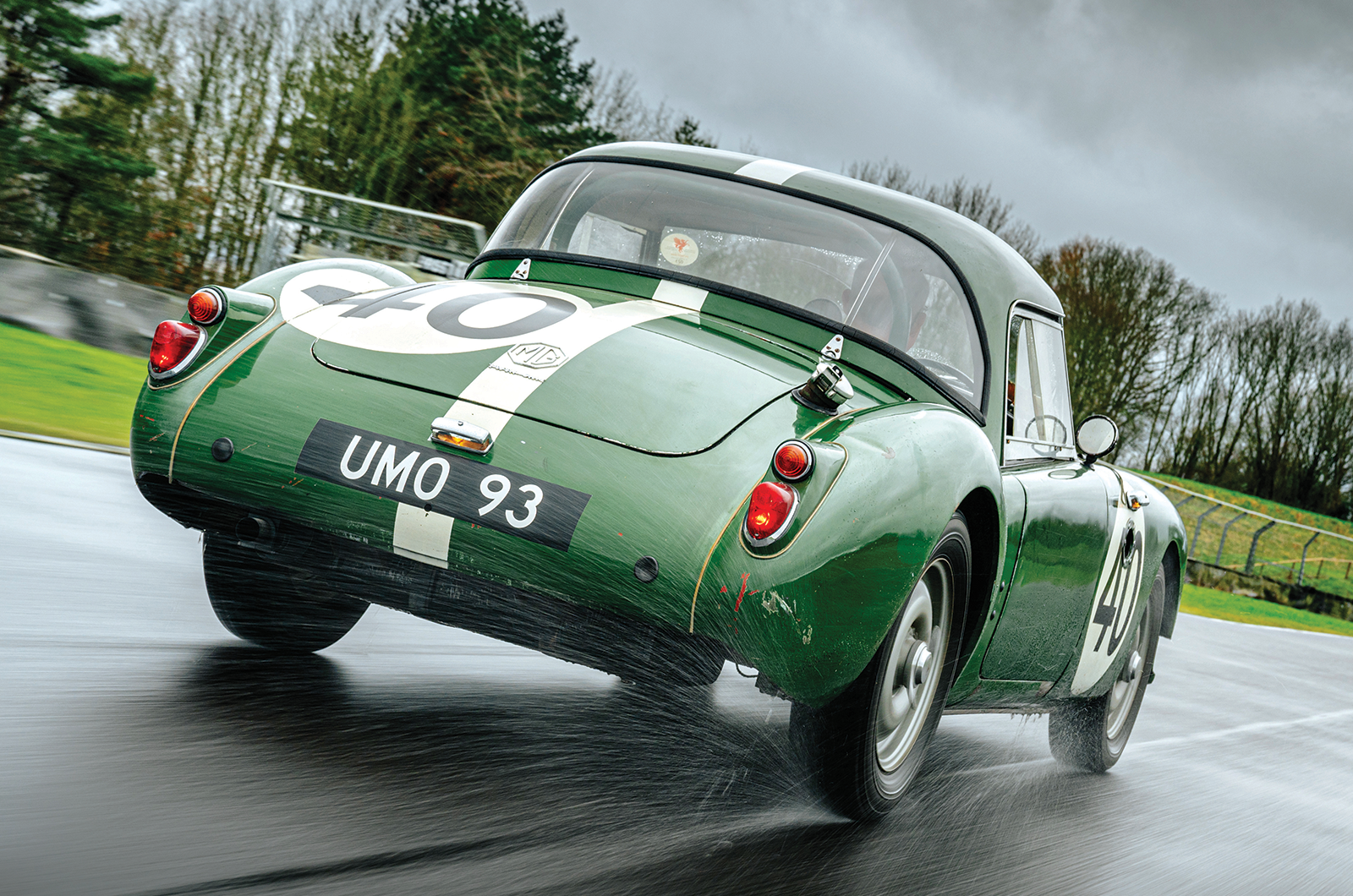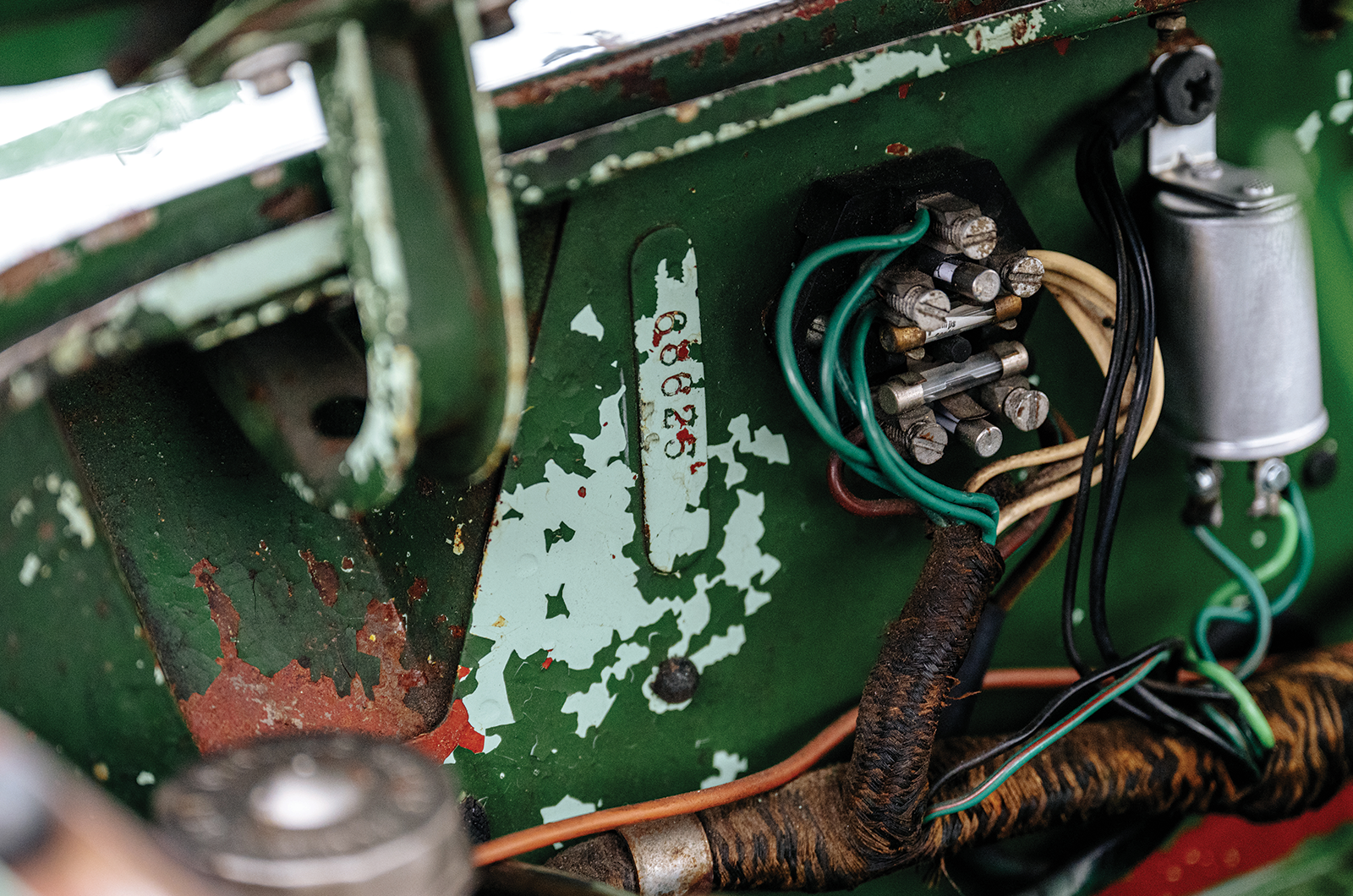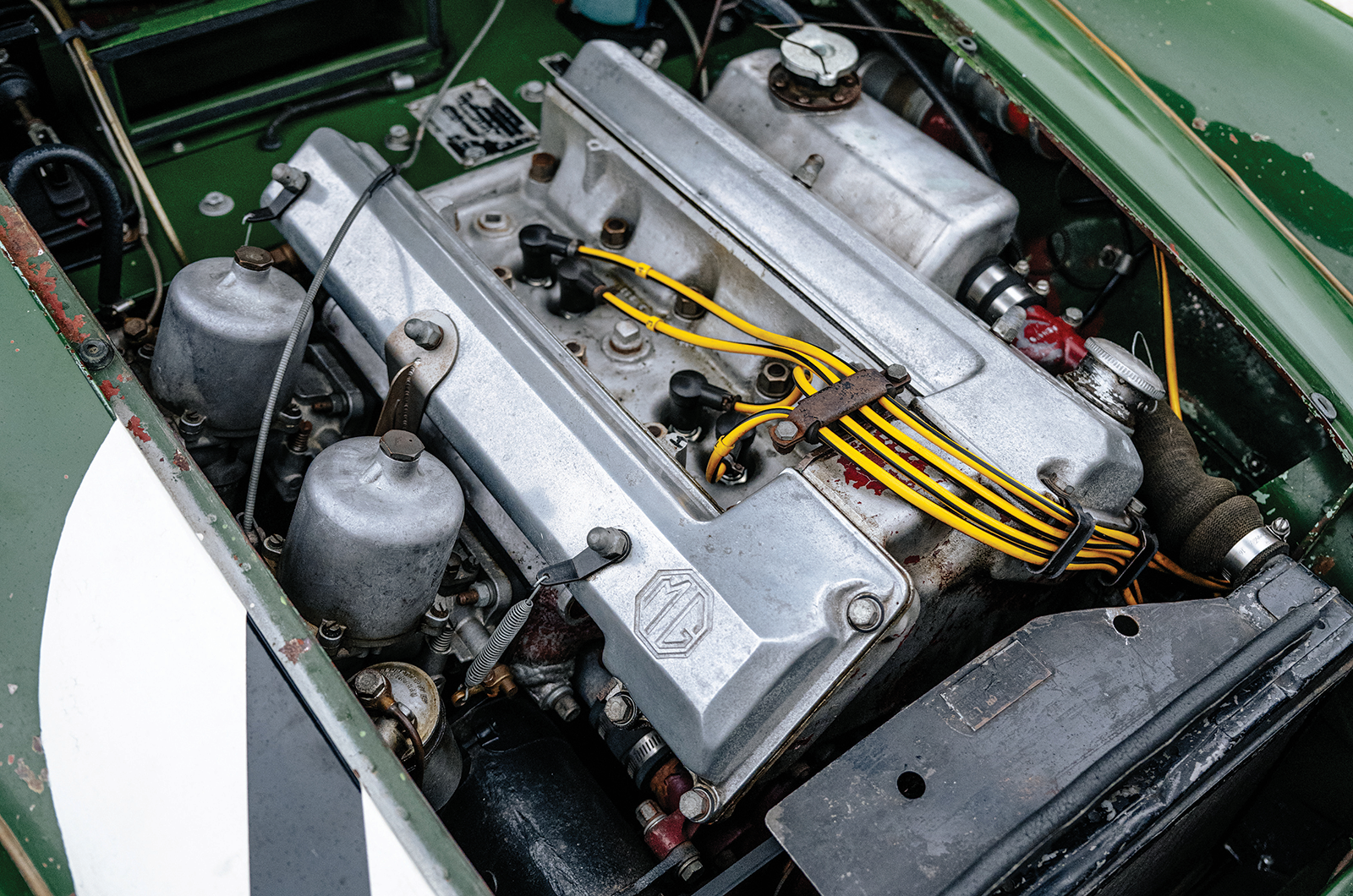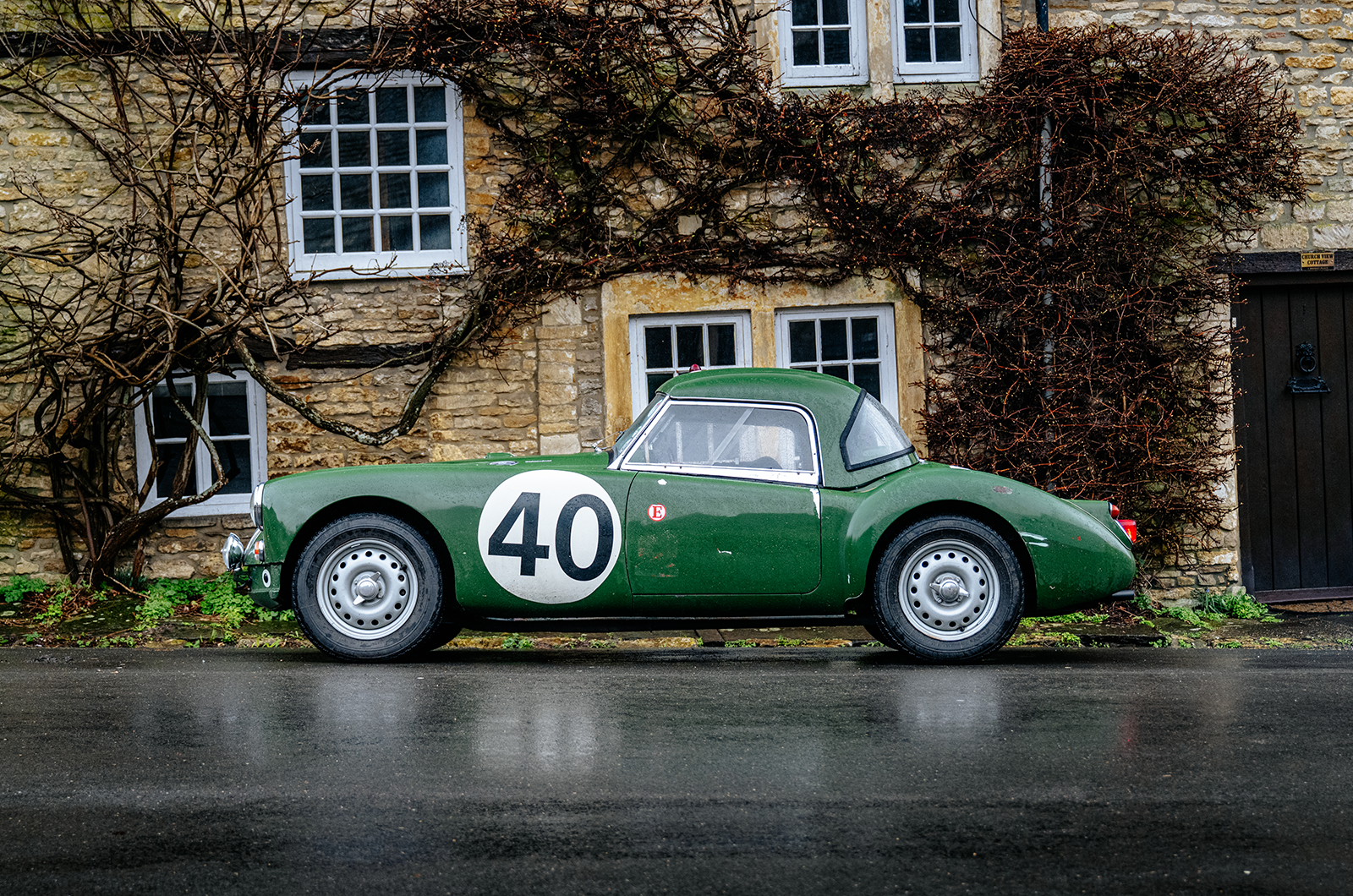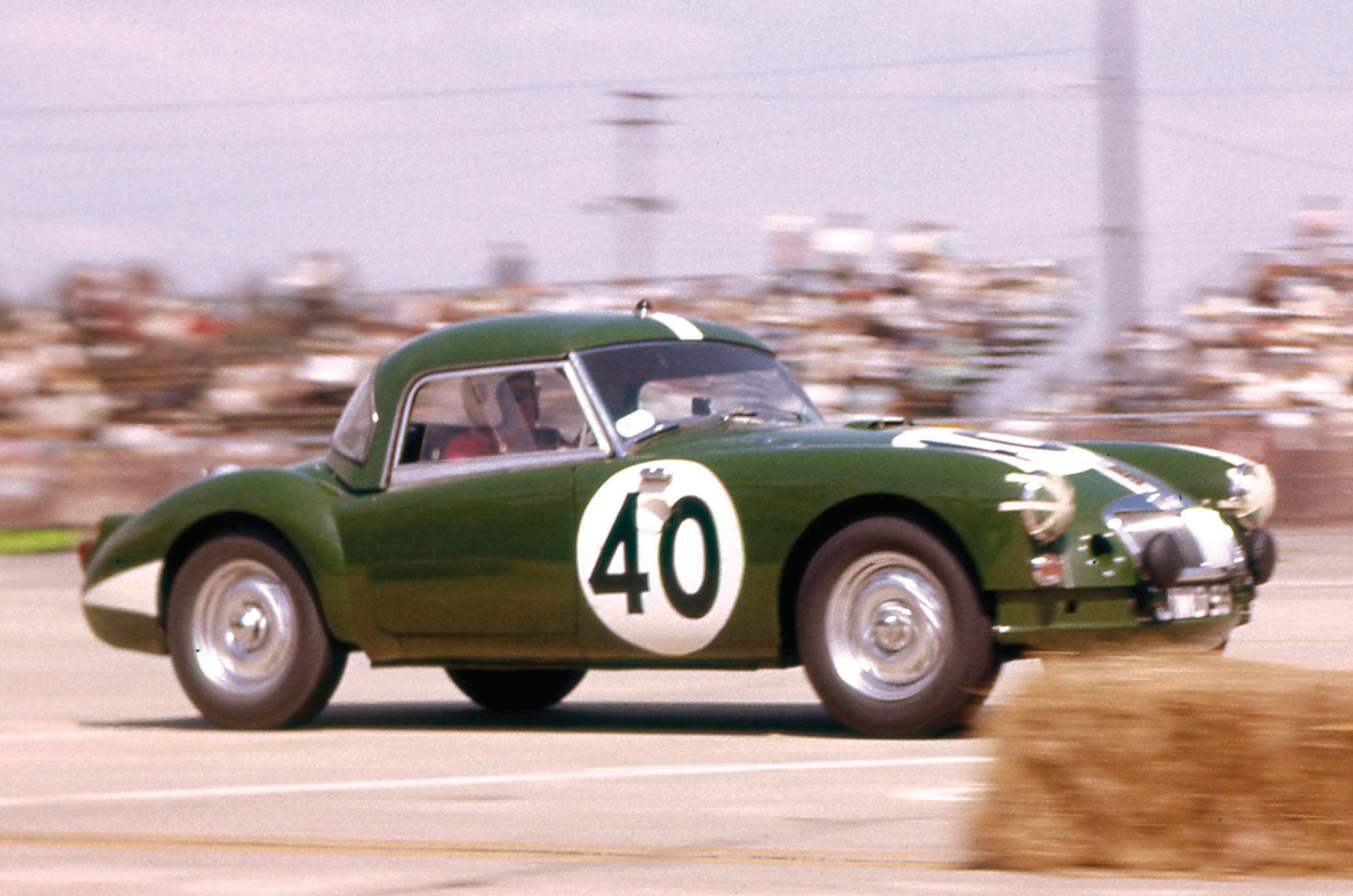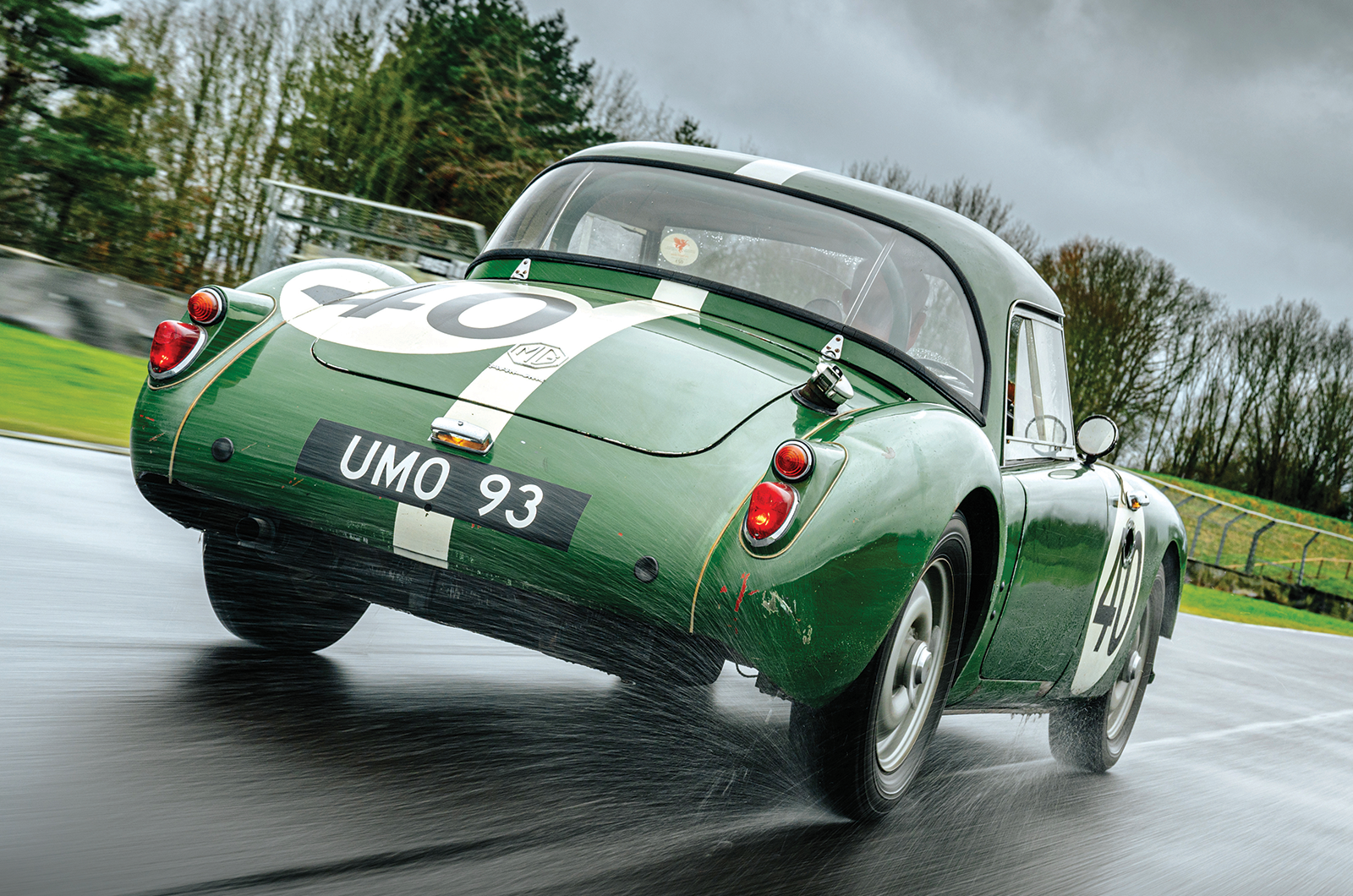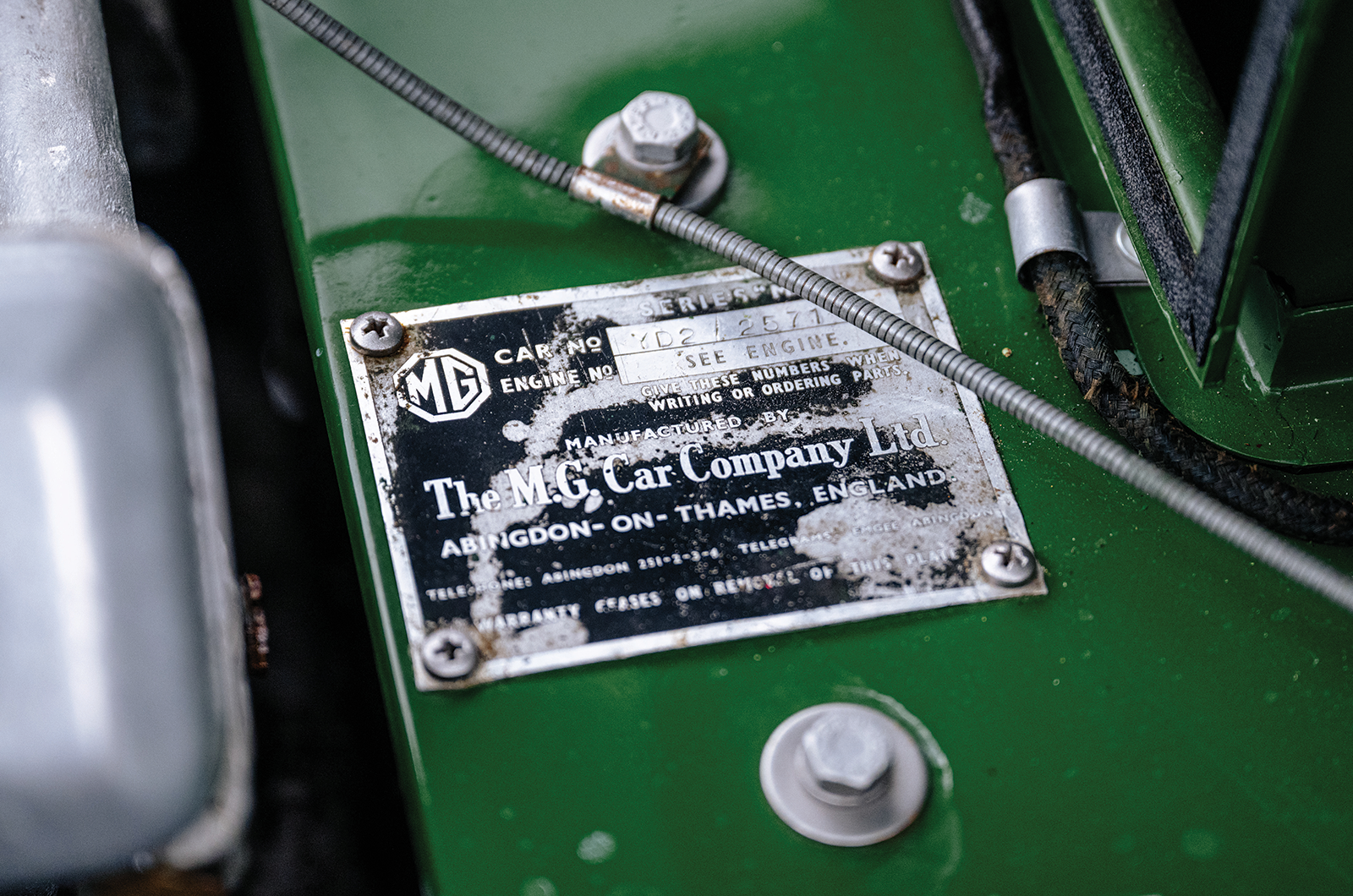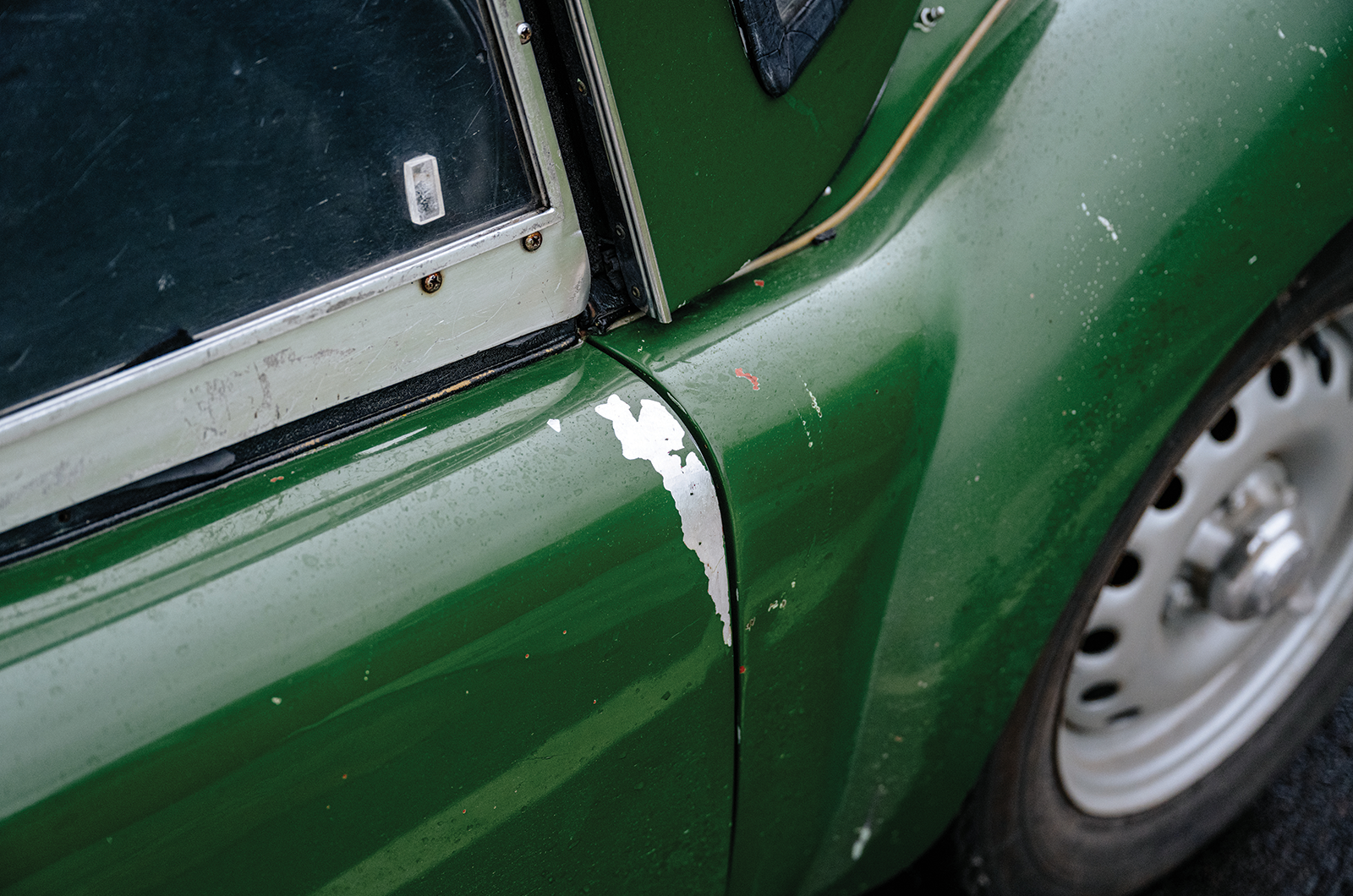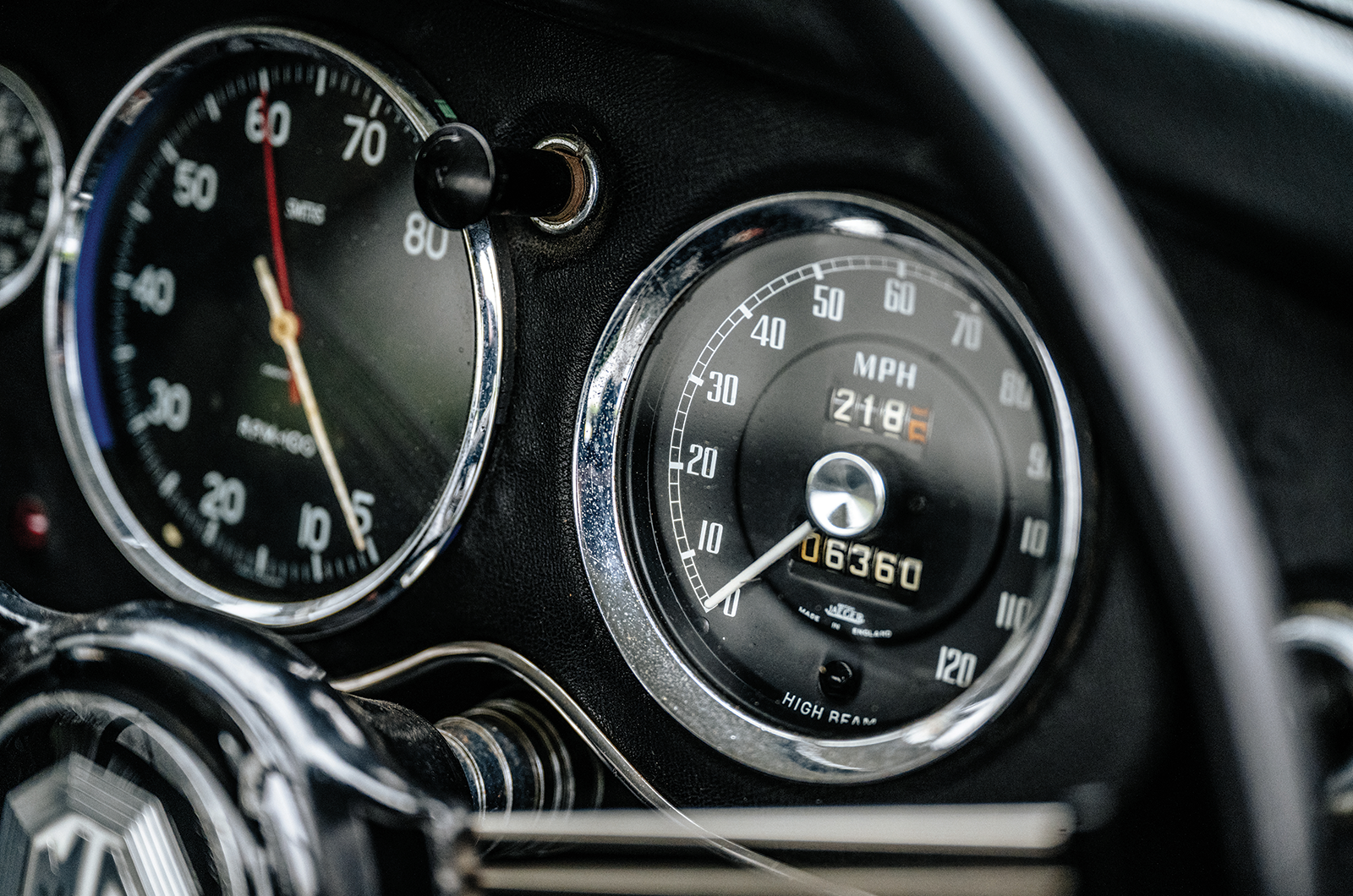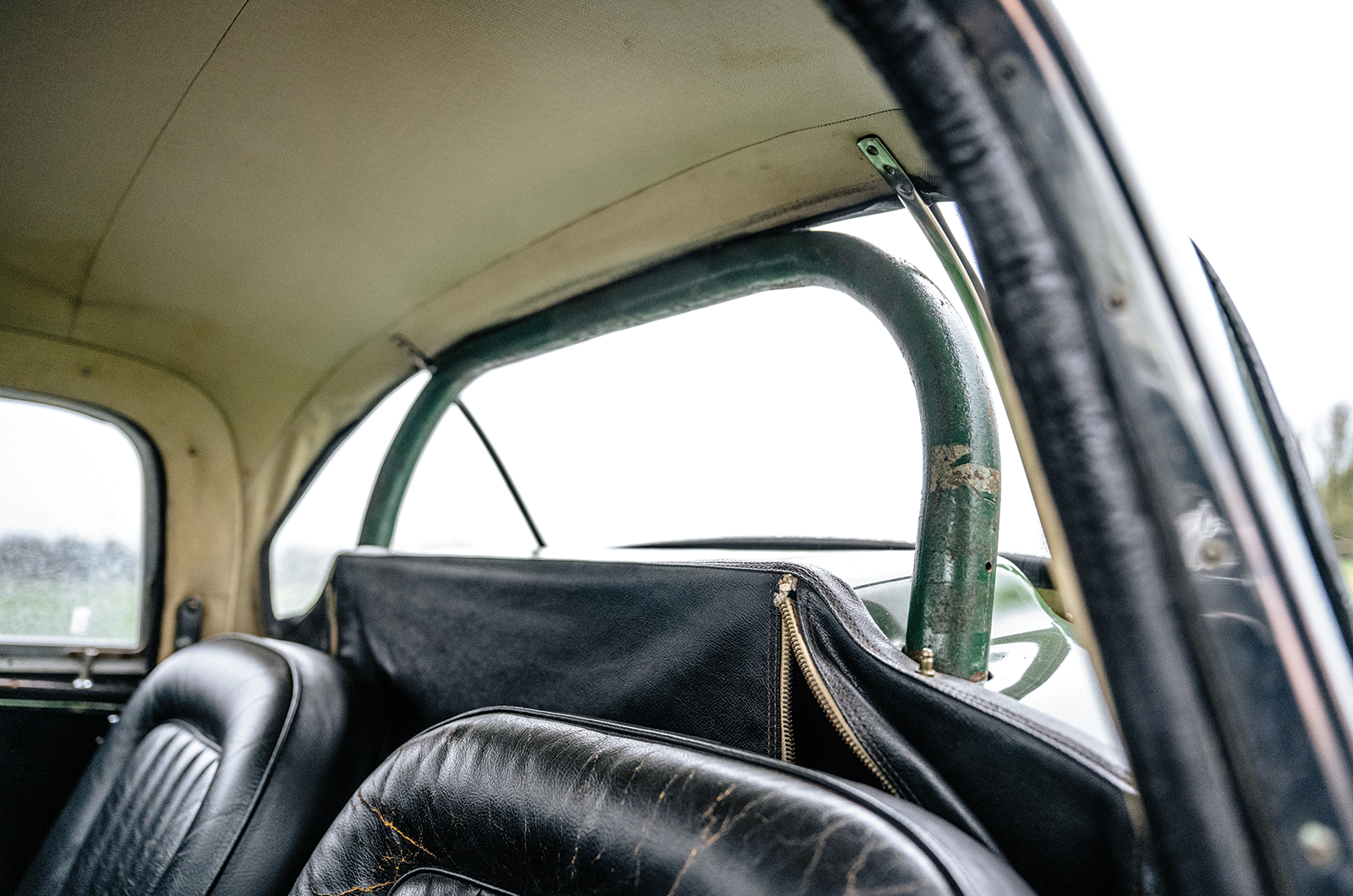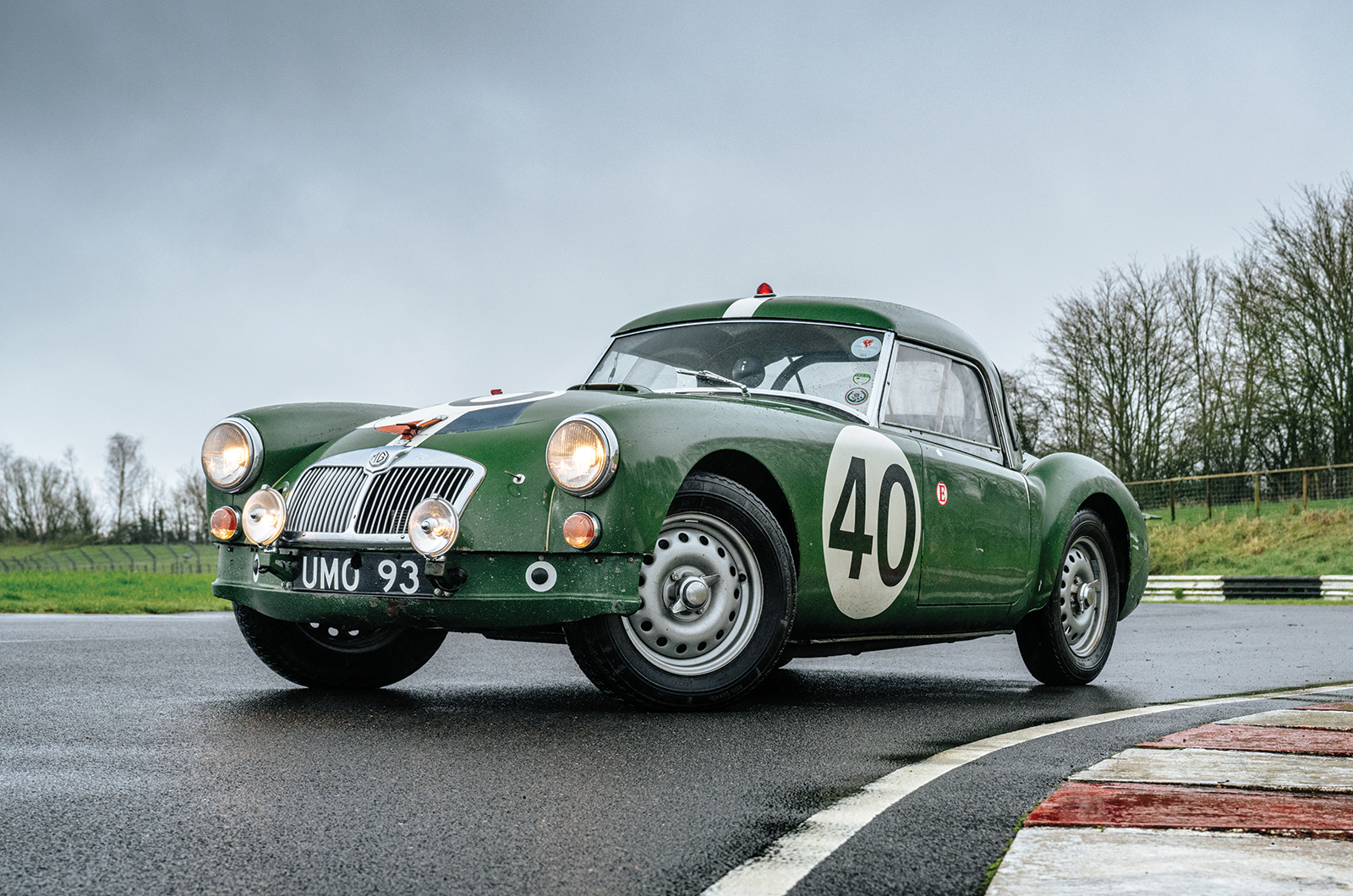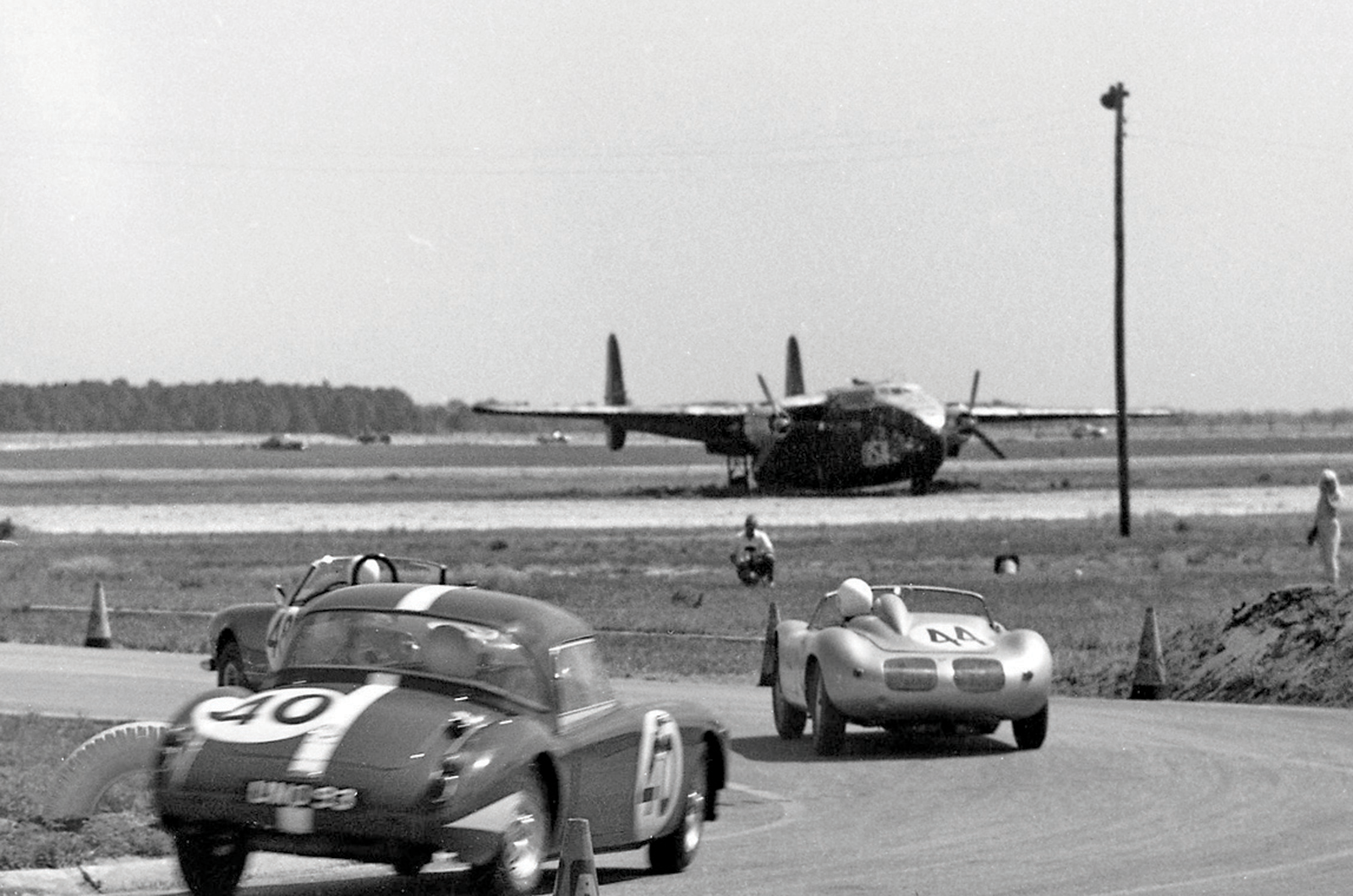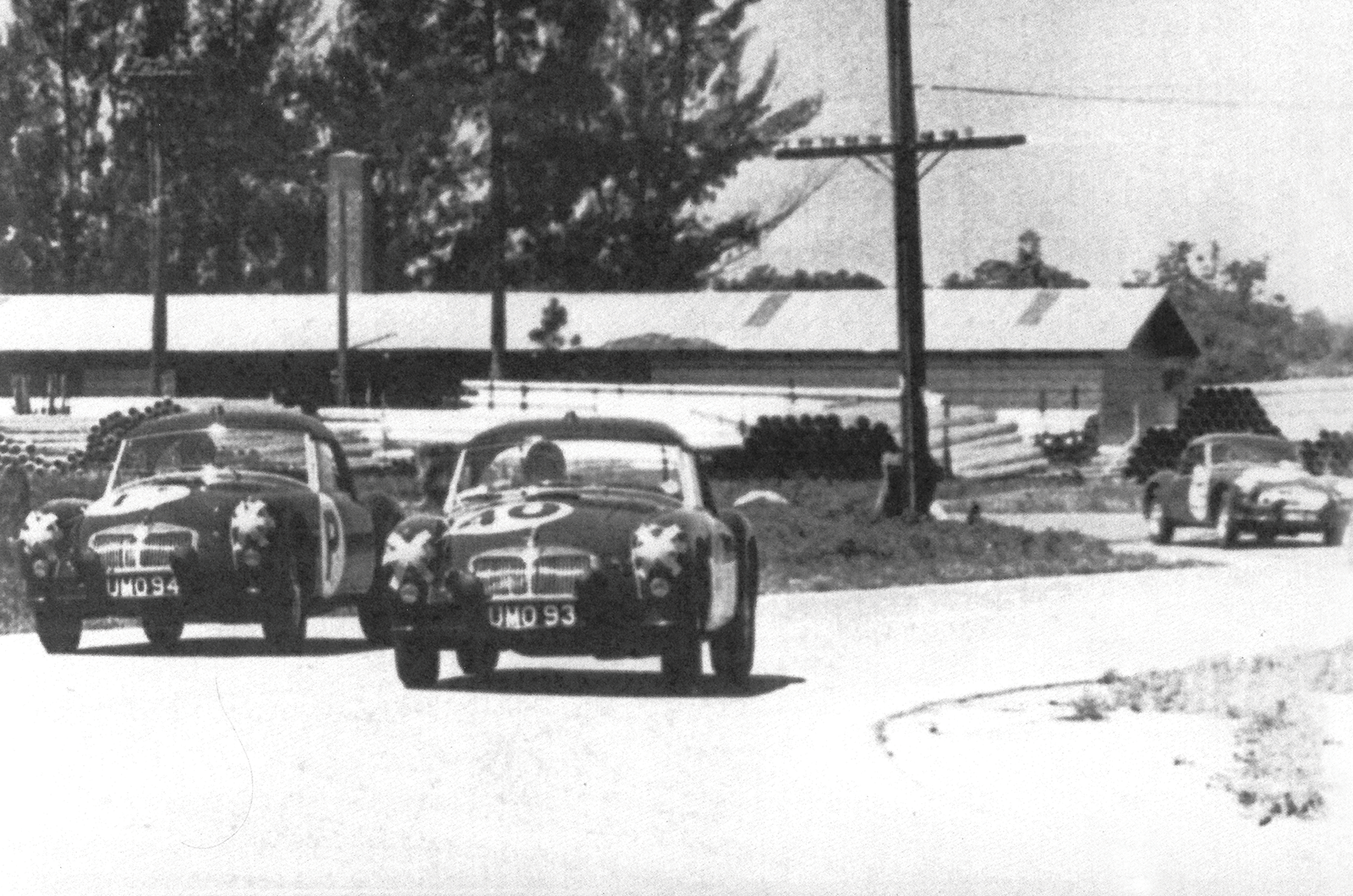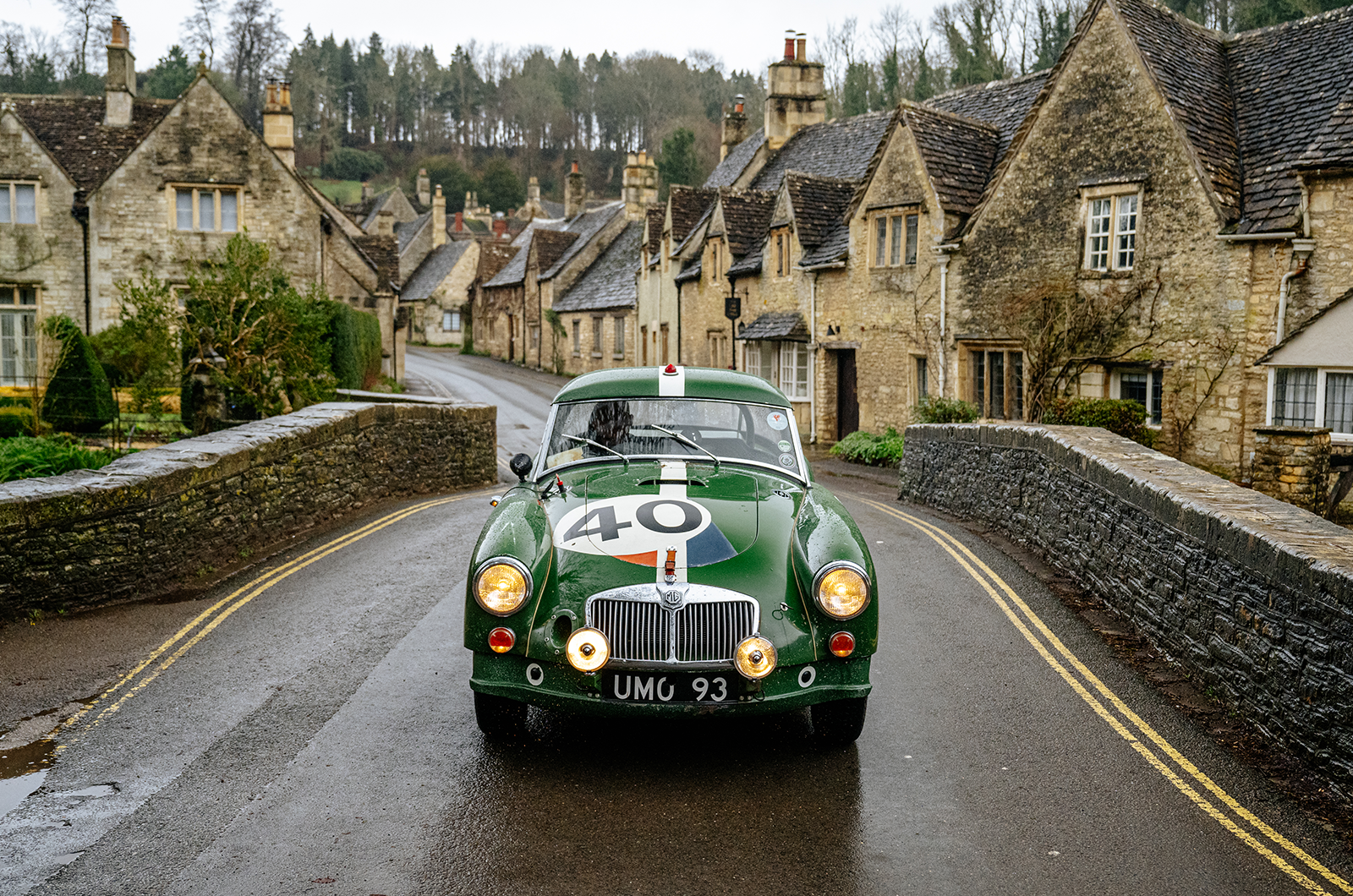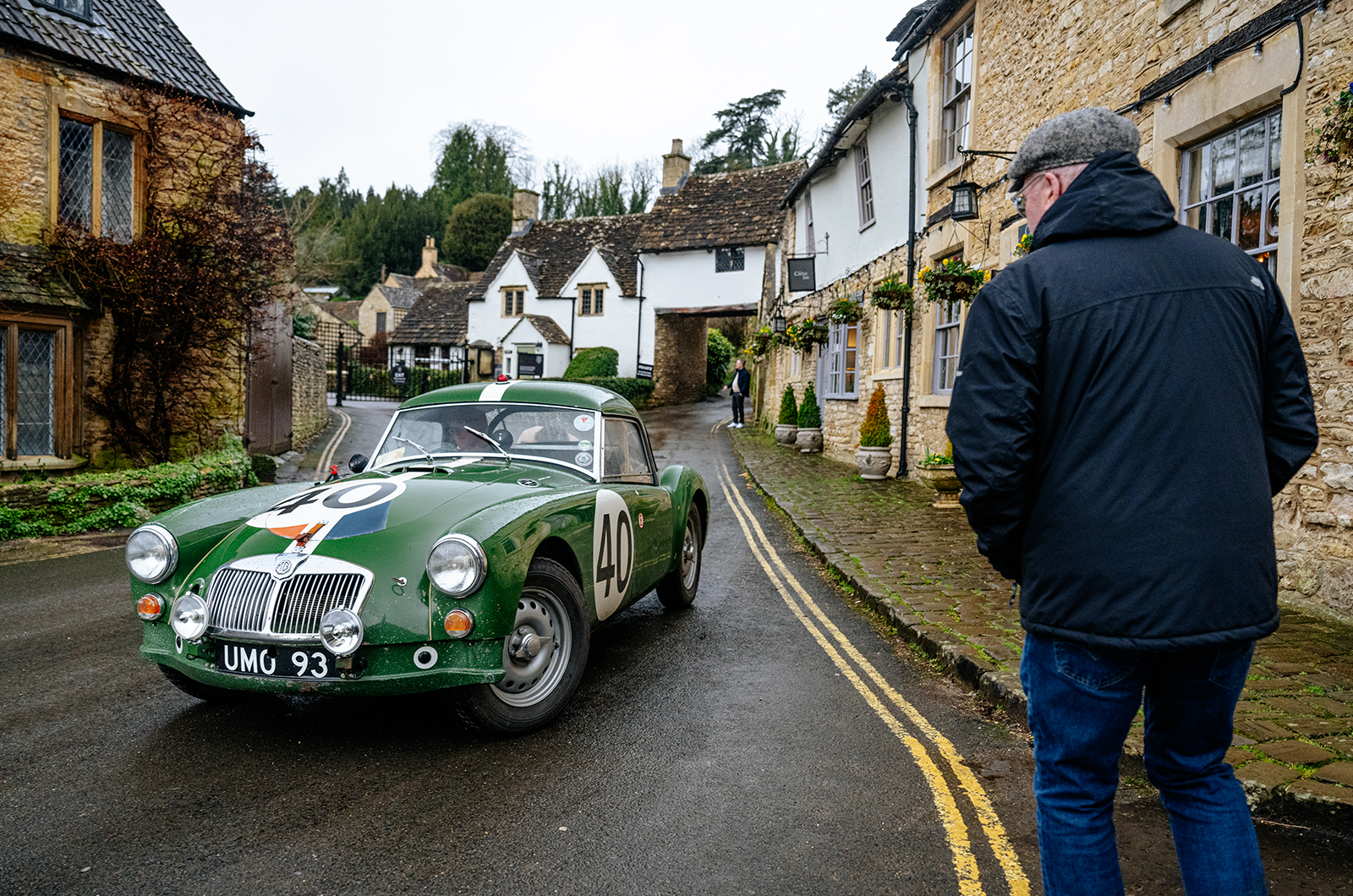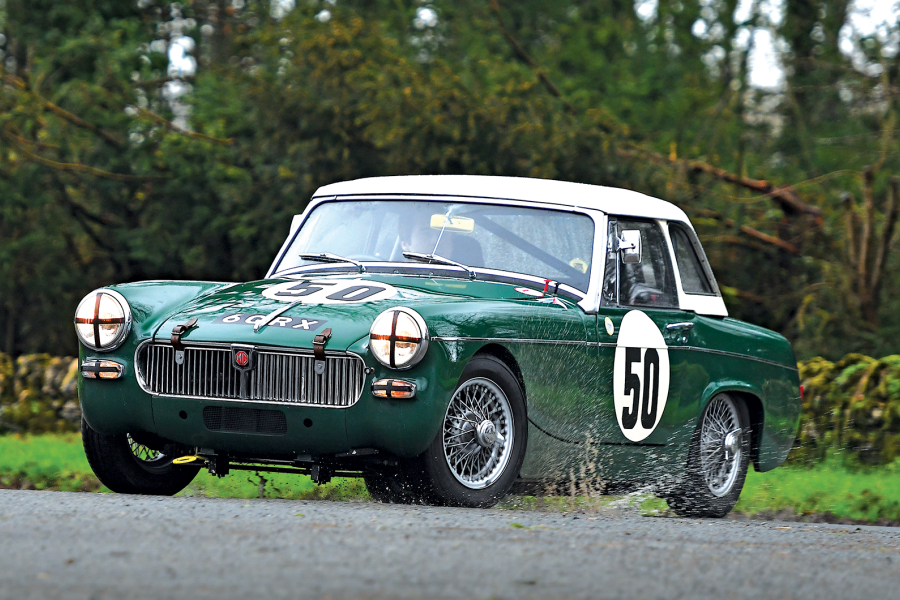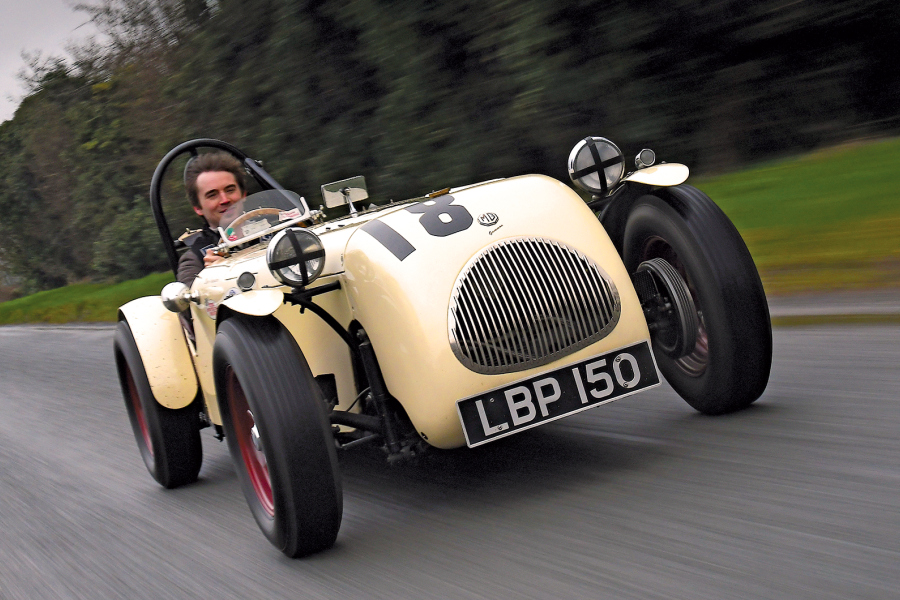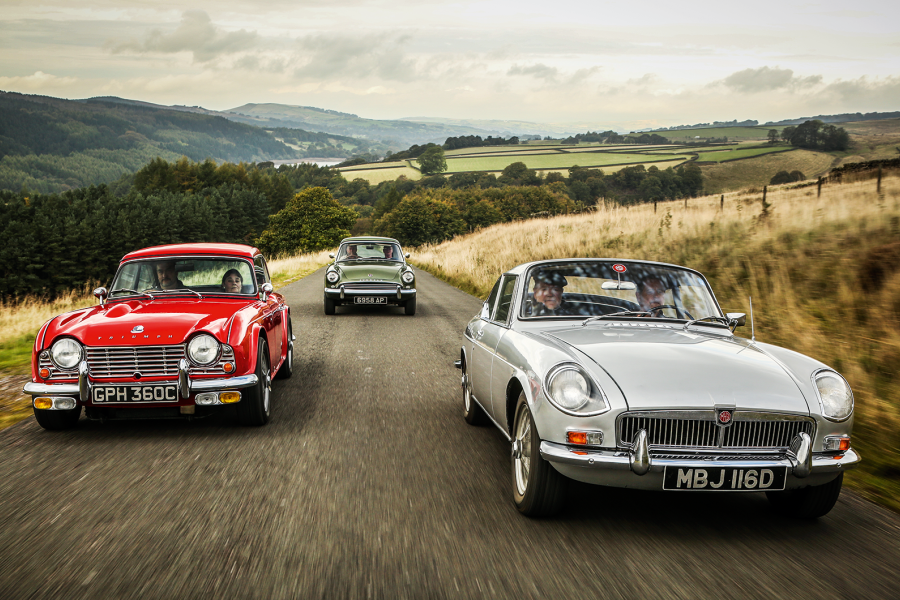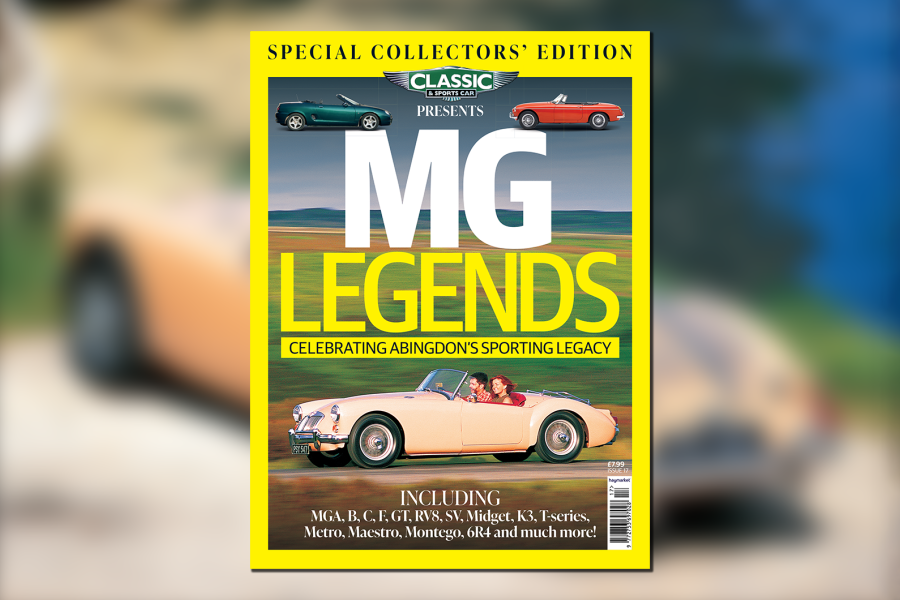Lucas spots poke from either side of the grille, with the single intake for the SUs positioned just behind the offside light.
The painted roundels look original, and the MG now wears the number 40 it once sported at Sebring all those years ago.
The telltale roof light, helping the team quickly identify which Twin Cam was flashing by in the dark, remains in the centre of the hardtop; up front, a battery kill switch, bonnet scoop and leather tie-down strap all mark out UMO 93 as the dyed-in-the-wool racer it once was.
There’s a gaping vent alongside the MGA Twin Cam’s grille, which feeds its larger 2in SU carburettors
All of which puts you in the right frame of mind as you enter UMO’s cabin.
Racing seats – actually, rather plump and comfortable roll-top leather chairs rather than buttock-pinching buckets – and some pull-out knobs for the additional lighting are the most obvious differences.
Then you glance in the dash-mounted rear-view mirror and see a chunky rollover bar framing the back window.
Before you is the standard Twin Cam’s large, thin-rimmed four-spoke steering wheel, behind which are a rev counter (redlined at 6000rpm, just shy of Buchanan’s suggestion), a 120mph speedo, and secondary fuel and combined oil-pressure/water-temperature gauges.
The MGA Twin Cam’s revamped B-series engine was durable if well maintained
Even with the seat in its rearmost position you sit close to the Twin Cam’s wheel, with the fingers of your left hand able to form a bridge between its lower rim and the top of the gearlever.
The pedals are nicely spaced, and after you’ve flicked down the fuel-pump switch and thumbed the starter, pulling away is an untemperamental process.
First gear is tall, but second and third are very close, with a larger gap to top, which still runs at around 19mph per 1000rpm; even a 6500rpm limit (Flaherty and Parkinson were pushing above 7000, by all accounts) would allow 123mph down Sebring’s straights.
This time-capsule MGA Twin Cam is the perfect antidote to restomod racers
The MGA’s rack-and-pinion steering is a delight: not overly weighty at low speeds, but full of feel, devoid of play off-centre and quite direct, with 2.75 turns from lock to lock.
This, combined with the precise and narrow throw of the little gearlever, renders the Twin Cam tactile and engaging from the off.
Our destination today is a rainswept Castle Combe Circuit, where we hope to enjoy an essence of what Flaherty and Parkinson experienced back in the day.
This MGA Twin Cam racer embraces its imperfections
Accelerating down Avon Rise towards the notorious Quarry right-hander, the B-series engine is no aural sophisticate: plenty of noise from the valvegear is amplified in the cabin by the aluminium hardtop.
But step beyond 4000rpm – easy to do with such a responsive throttle – and a distinct twin-cam snarl takes hold, beckoning you closer to the redline out of each bend.
Any hint of the body-on-frame jitteriness that had been apparent on the scarred roads around Castle Combe is gone, and UMO feels composed, neutral and grippy as you push a little harder.
From Sebring to Wiltshire, this MGA Twin Cam still turns heads
The Dunlop discs need plenty of pedal effort from higher speeds, but, once acclimatised, they are strong and reassuring, and you can imagine how easy it would have been for UMO’s drivers to outbrake heavier and more powerful machinery into tighter corners.
This diminutive racer is a jewel. But what makes UMO 93 so captivating is its authenticity.
At a time when so many period circuit cars have been fettled way beyond their original abilities, this MGA Twin Cam has remained faithful to its roots – and is all the better for it.
Images: Jayson Fong
Thanks to: Will Stone Historic Cars; Castle Combe Circuit
Enjoy more of the world’s best classic car content every month when you subscribe to C&SC – get our latest deals here
READ MORE
Buyer’s guide: MGA
Little gems: Alfa Romeo Giulietta Sprint vs MGA Twin-Cam vs Lotus Elite vs Porsche 356B
The greatest ’50s sports cars: XK120 vs MGA, AC Ace, Healey 100 & TR3A
Simon Hucknall
Simon Hucknall is a senior contributor to Classic & Sports Car
